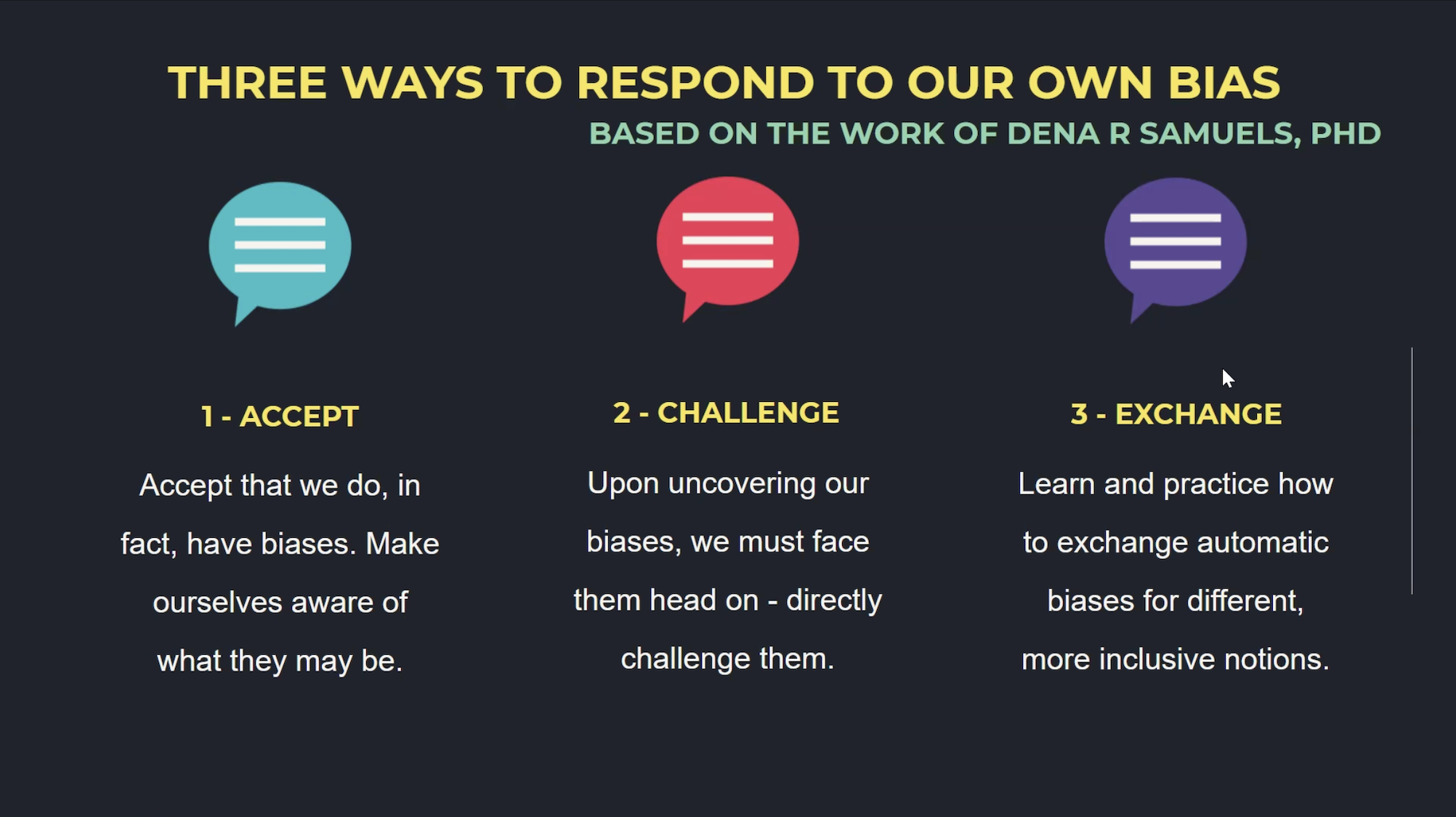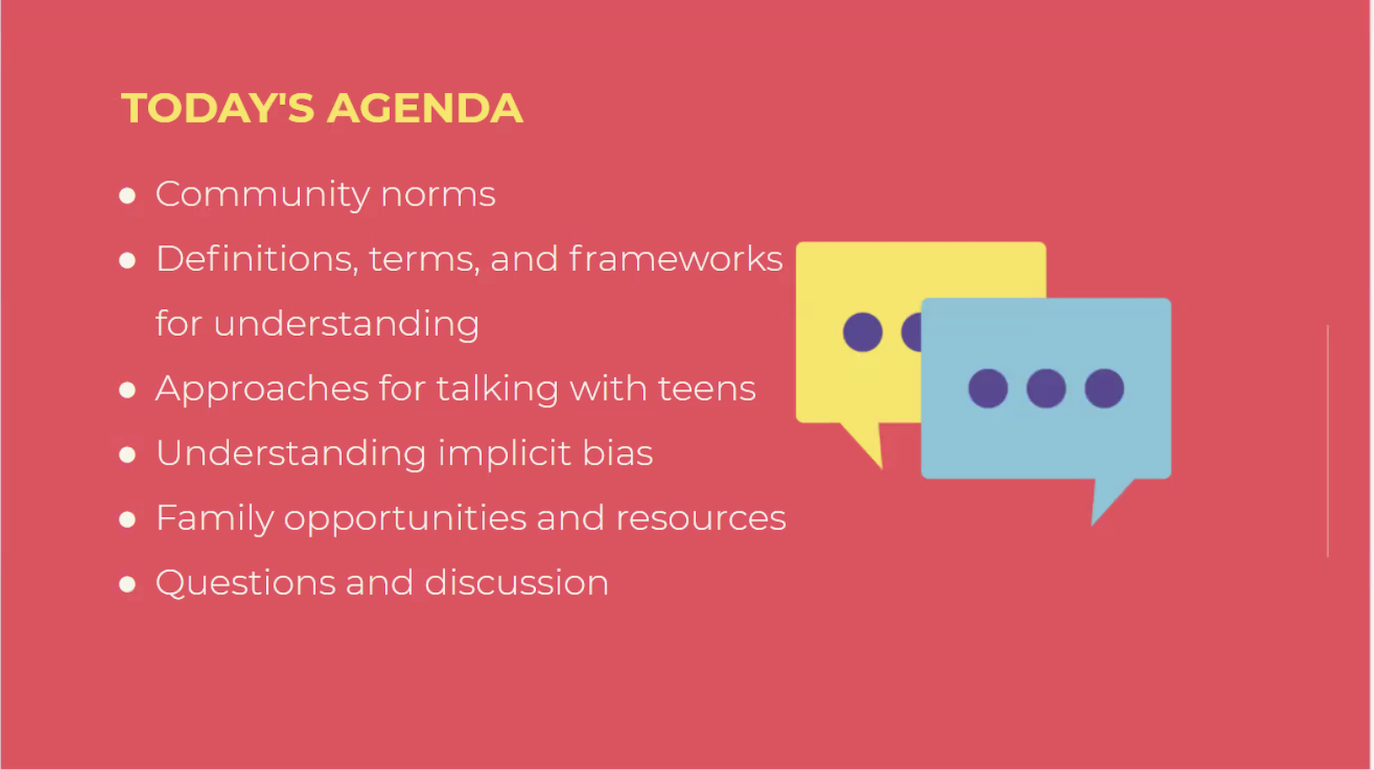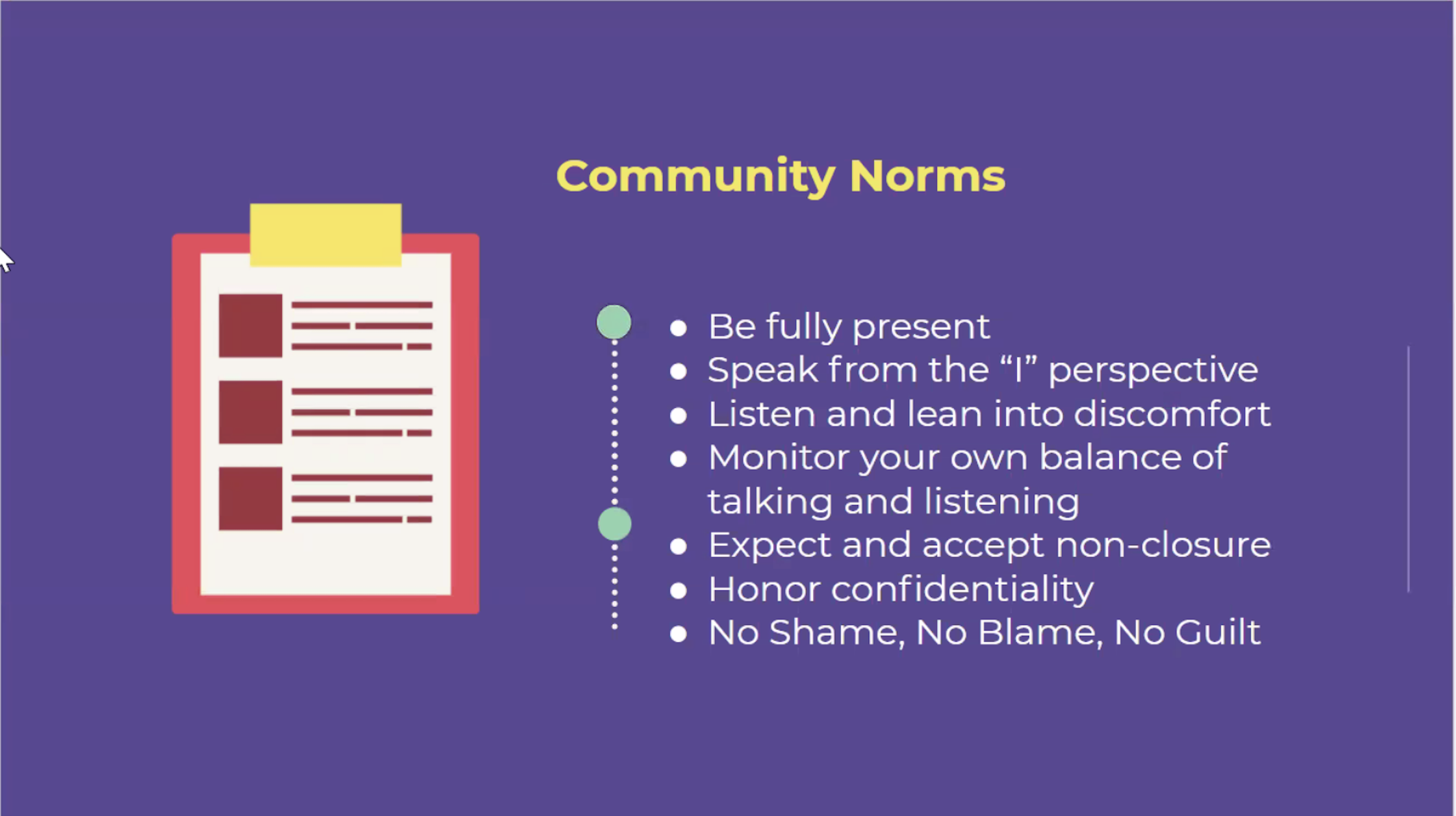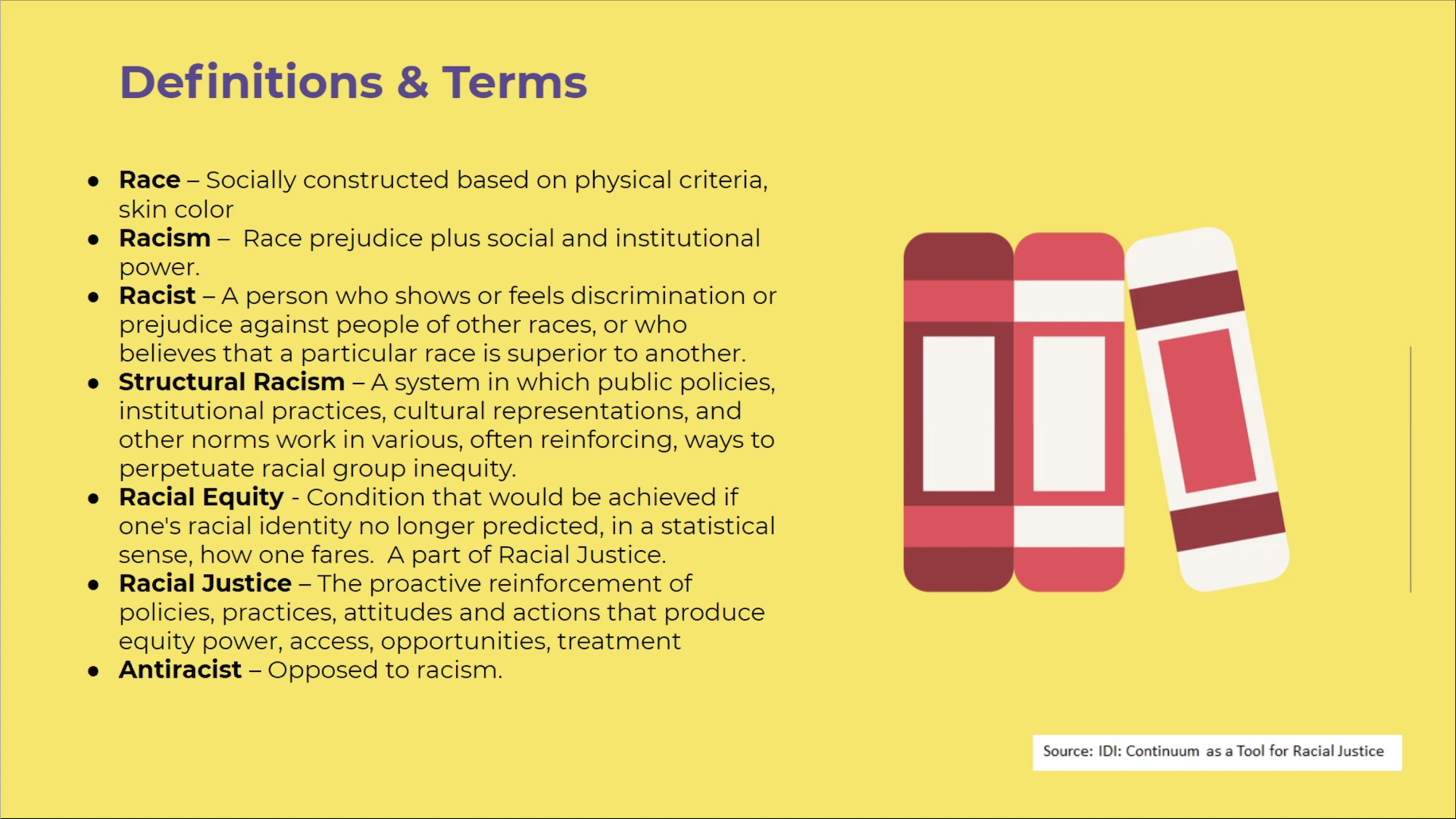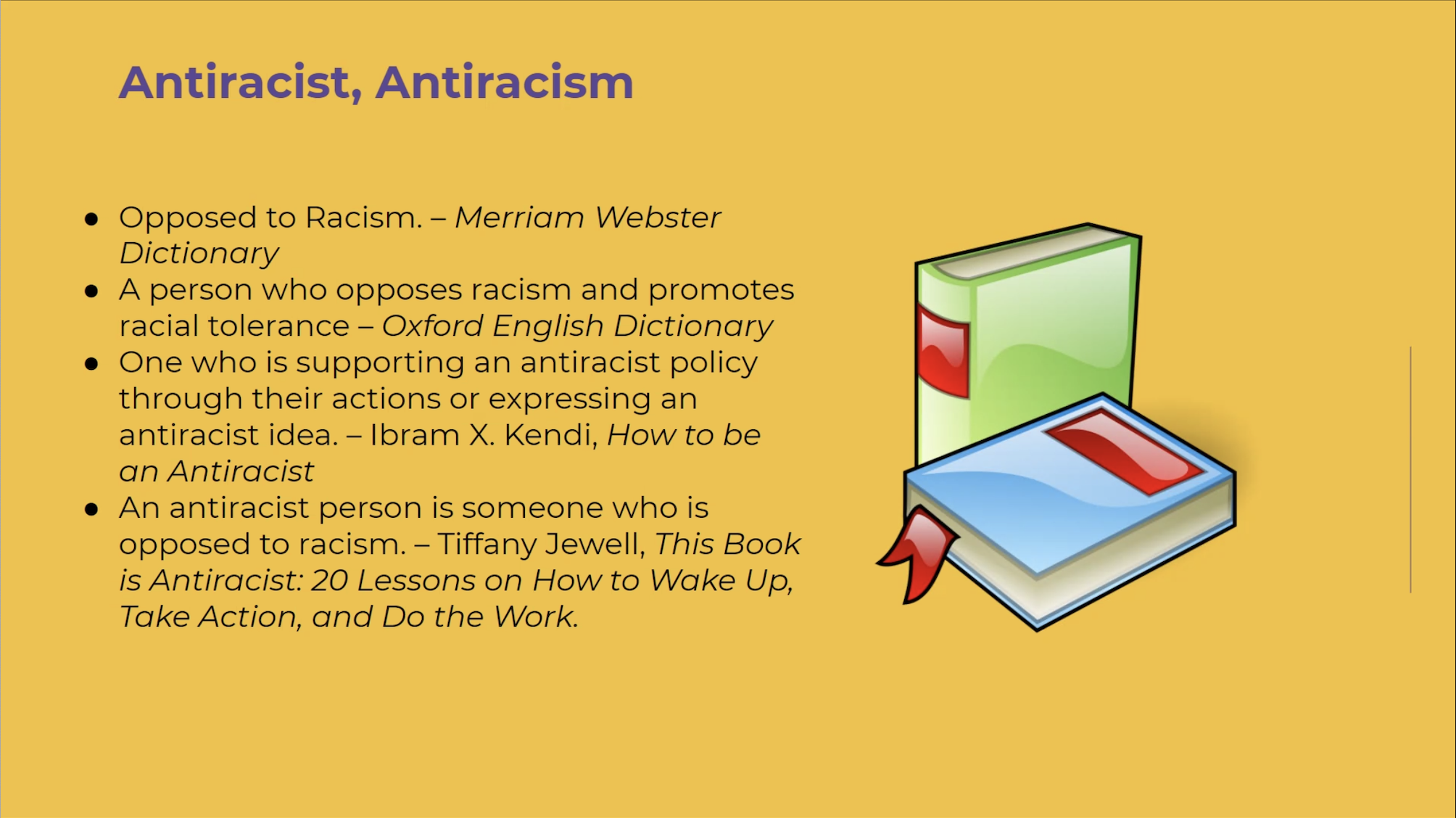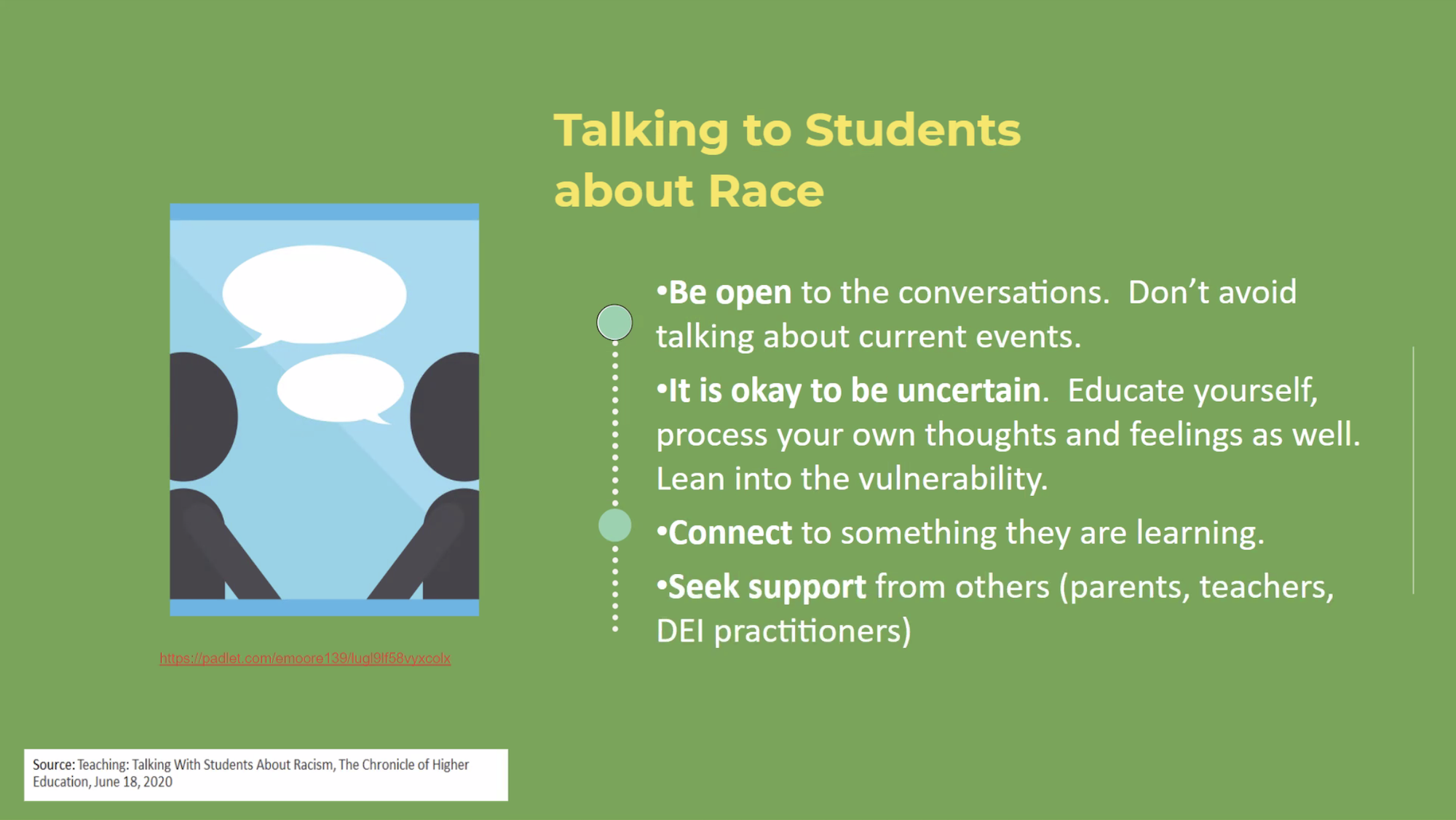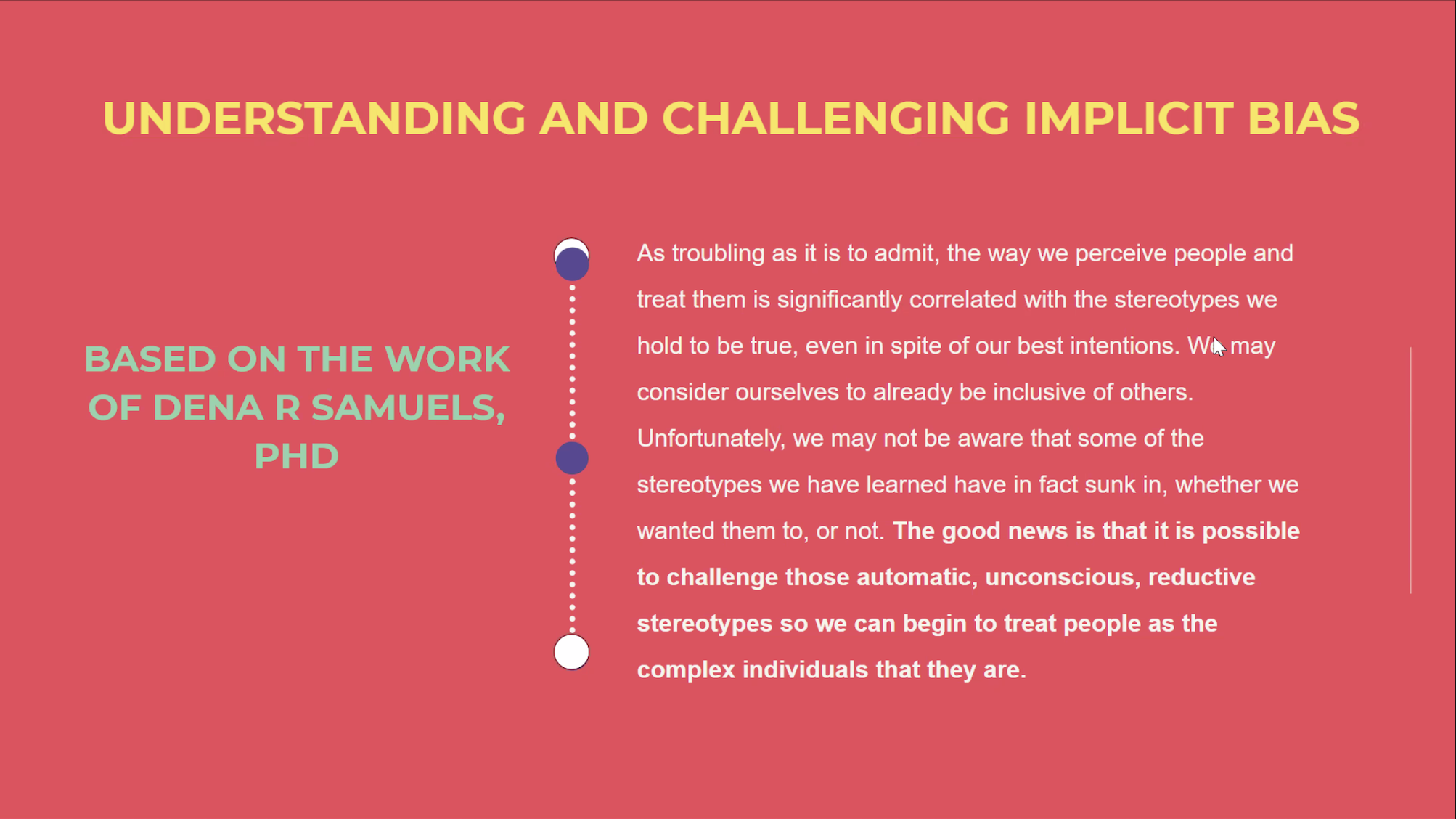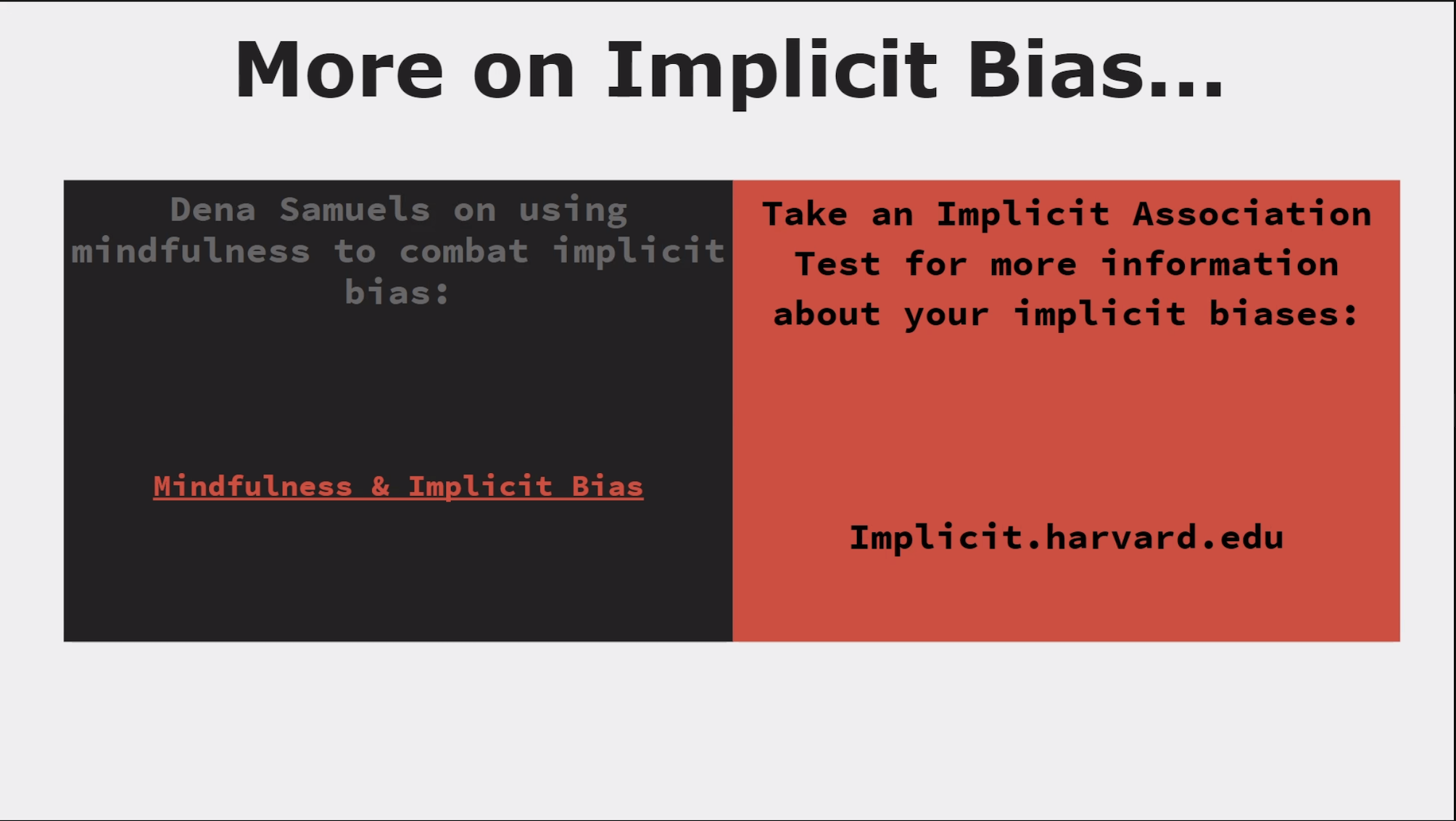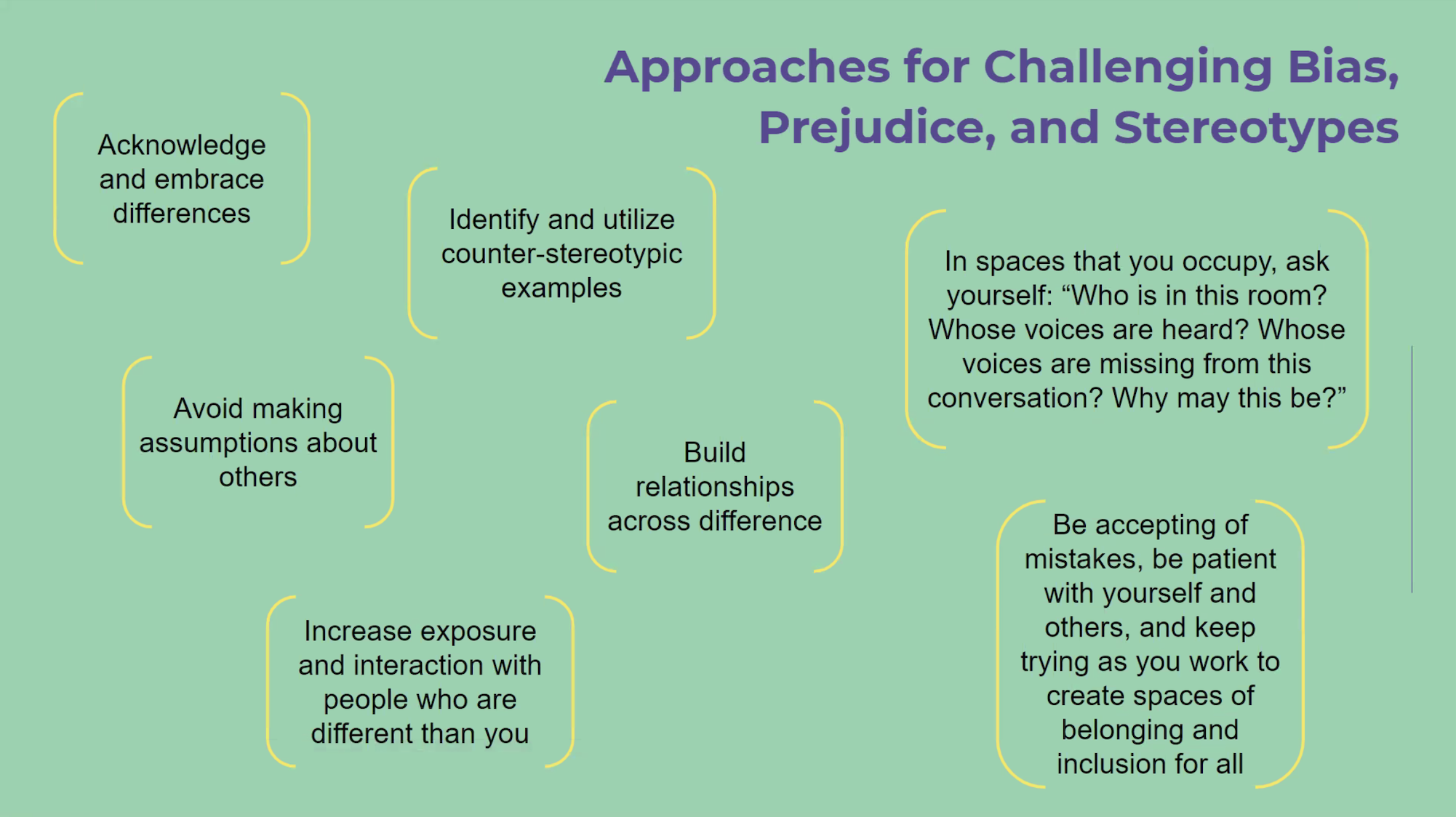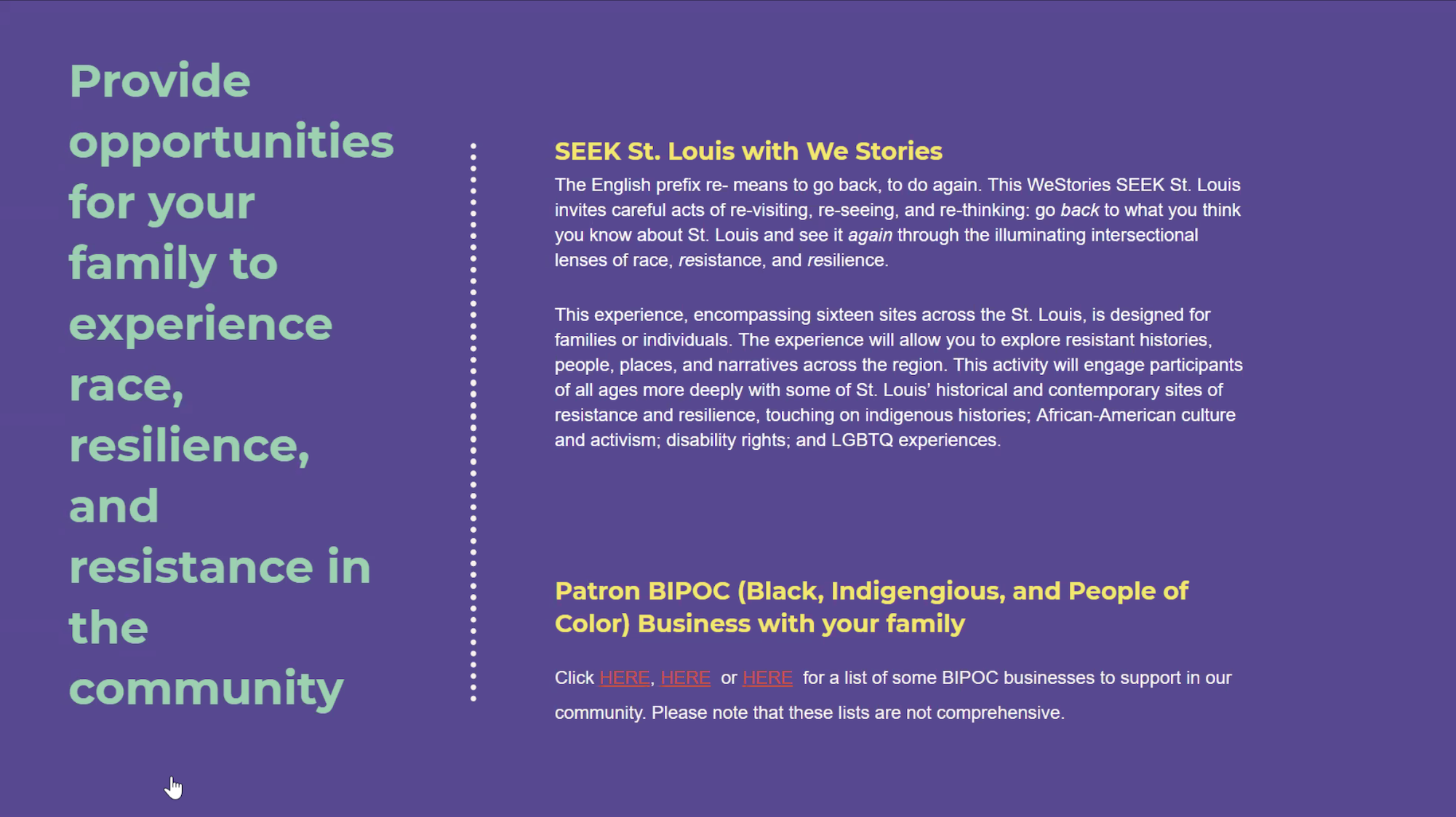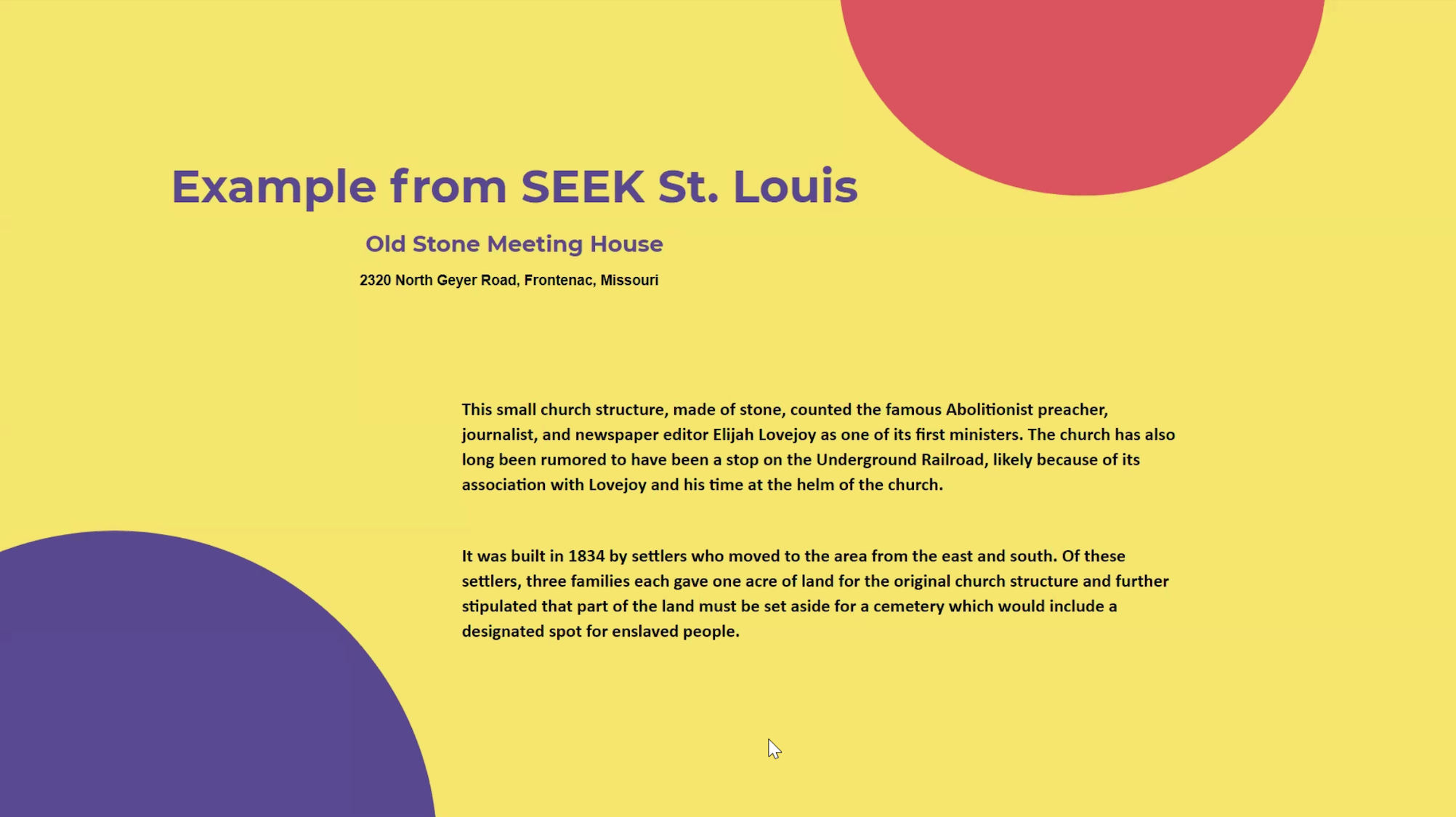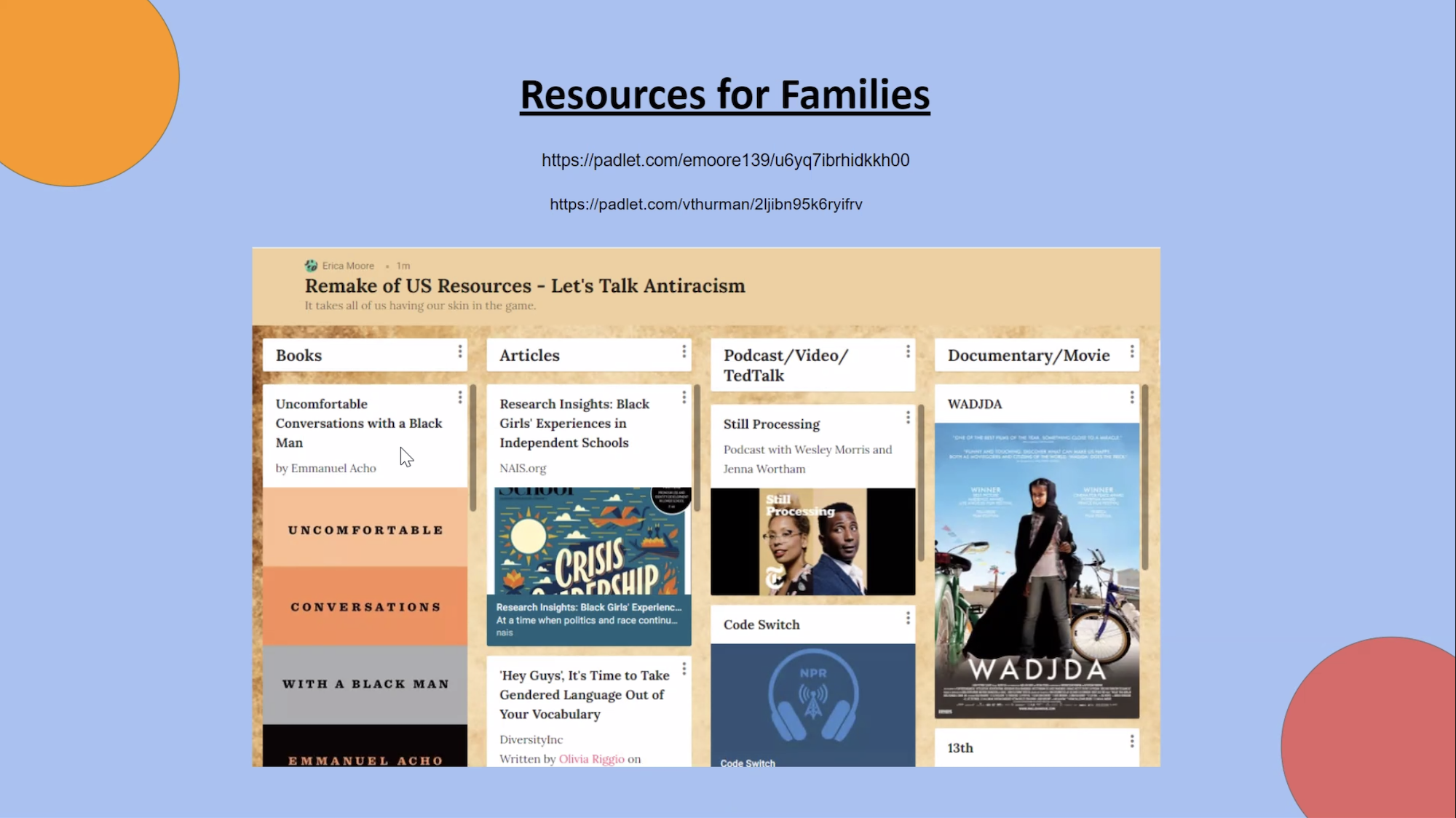David Hotaling, US Counselor, and Erica Moore, Director of Faculty Equity and Inclusion and Director of Student Activities, welcomed Upper School parents to a presentation and open discussion this week on The Time is Now: Talking about Race, Prejudice, and Bias With High School Students.
Hotaling began the session by establishing community norms, or guidelines for discussion, so everyone would feel as comfortable as possible when discussing a sensitive topic. He explained that these community norms are universal and are exactly what we use to set the stage for discussions with student groups.
Moore then led the presentation, saying, “We are all in this together and we’re all learning together.” She established two ground rules for successful discussions about race with teenagers:
- Be open to the conversations. Don’t avoid talking about current events.
- It’s okay to be uncertain. Educate yourself, process your own thoughts and feelings as well. Lean into the vulnerability.
Moore then continued by setting up a clear framework for participants to understand exactly what the terms mean in these conversations and went through definitions of race, racism, racist, structural racism, racial equity, racial justice, and antiracist. Having common definitions helps ground us in the work of talking about race. There are different definitions of what it means to be antiracist, but the common thread is opposing racism in both words and action, and opposing it in ways of practice, policies, treatment, and access.
How do you talk to your students about race?
There are several important things to keep in mind:
- We’re all uncomfortable talking about race, even though it can affect every single person regardless of their race. Be open to the conversations and don’t avoid talking about current events. Don’t shy away from those conversations.
- It’s okay to be uncertain. Educate yourself, process your own thoughts and feelings, and lean into your vulnerability. Share that you’re uncomfortable with your student.
- Connect to something students are learning, whether that’s in history class, in English class, in advisory, or in any part of their lives. They are constantly learning about racism. Start the conversation by asking questions: What did you see/hear, how did it make you feel? What do you think about that? What questions can I answer for you?
- If you still have anxiety or need help, seek support from others such as parents, teachers, counselors like Hotaling, and DEI practitioners like Moore. They are always open to talking about how to have conversations about race.
- Prepare yourself to enter the conversation with students, not for them or to them. Be willing to listen and learn, and acknowledge what you don’t know. Even though it’s messy and uncomfortable, it’s important for everyone to participate in order to make a difference.
Hotaling then paused the presentation and opened the floor for a vibrant discussion. Parents spoke about fielding questions about Dr. Suess books and how to discuss race with family members who have different opinions.
Moore explained that we’re all on different parts of the same spectrum when it comes to talking about race. Actors are those who are more like spectators, who observe what is happening but do nothing to disrupt the status quo. Allies educate others and disrupt in spaces where racism is present. Accomplices directly challenge institutional racism. They don’t take a break, constantly challenging policies and being active in their antiracism efforts. They aren’t motivated by personal guilt or shame but are instead trying to make a difference. Accomplices actively listen with respect. “We need everyone to have their skin in the game to have real change happen,” said Moore, and that regardless of where we are on the spectrum, there is no judgment, but it’s important to start and to lean into the difficult conversations.
Hotaling covered implicit bias and what it means to understand and challenge our own implicit biases. “People who have these attitudes don’t wear a t-shirt that says, ‘I’m a racist,’” he said. We may consider ourselves to be inclusive, but some of the stereotypes we have learned have sunk in whether we want them to or not. The good news is that we can work to change our own automatic, unconscious, reductive stereotypes and begin to treat people as the complex individuals they are.
What do we do with implicit biases? First, we need to accept we have them and uncover what they are. Second, challenge those thoughts. Third, exchange your implicit biases for different, more inclusive notions. Hotaling showed a video by Dena Samuels about mindfulness and implicit bias, where she says that spending a few minutes each day thinking about this can help lower your implicit biases. She also recommends to be very present with others in the moment, so you’ll end up with a much deeper connection to the other person.
Moore explained that sometimes you can even have implicit biases against your own status, and not even realize it. She described how one working mom discovered she had an implicit bias against mothers who work outside the home, much to her surprise.
Approaches for challenging bias, prejudice, and stereotypes
- Acknowledge and embrace differences.
- Avoid making assumptions about others.
- Identify and utilize counter-stereotypic examples.
- Increase exposure and interaction with people who are different than you.
- Build relationships across differences.
- In spaces that you occupy, ask yourself: “Who is in this room? Whose voices are heard?
- Whose voices are missing from this conversation? Why may this be?”
- Be accepting of mistakes. Be patient with yourself and others, and keep trying as you work to create spaces of belonging and inclusion for all.
It’s important to provide opportunities for your family to experience race, resilience, and resistance in the community. Moore shared that there are resources available to accommodate any learning style, including books, podcasts, articles, and videos. See below for a great list to start.
Moore stressed that it’s important to take time to process the information you’re taking in, in order to grow your own competency. She encourages everyone to, after reading a book or article or watching a documentary or movie, ask yourself: What did you learn? What did you engage with? Will it change your behavior or encourage you to seek additional information? “It’s not just about attending a workshop or seeing a film,” she said, “but how are you processing the information or changing your actions because of what you learned.”
She also reminded parents that this is a constant conversation; there are many things we can do to be antiracist. She said that parents and students are welcome to reach out to Mr. Hotaling, Director of Student Support Services Vicki Thurman, or herself if you want to have a conversation, mull things over, or even ask, “How do I say this?”
Thank you to Mr. Hotaling and Ms. Moore for their open, engaging discussion today, and for providing resources and answers on this important topic.
Resources
- Upper School Racism Resources Padlet
- MICDS Resources for Parents and Families
- The Winter 2021 issue of Independent Schools Magazine has many great articles about racism
- Take an Implicit Association Test for more information about your implicit biases
- The MICDS Black Student Union shared some great info during our celebration of Black History Month, including BIPOC-owned businesses you can support
- The MICDS Parents Association hosted a Passport Series/Black History Month event, Young Gifted and Black: How African American Youth Changed a Nation
- SEEK St. Louis, a self-paced scavenger hunt
